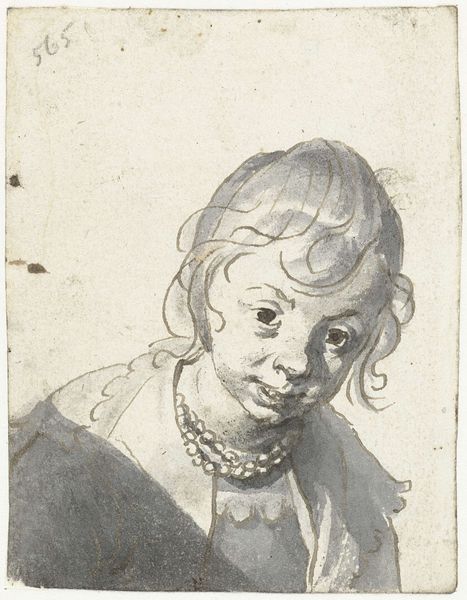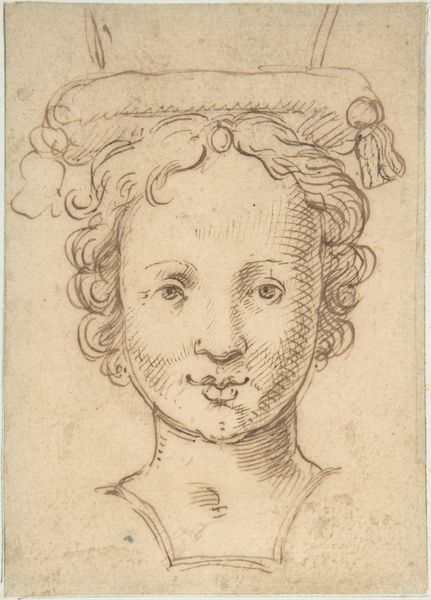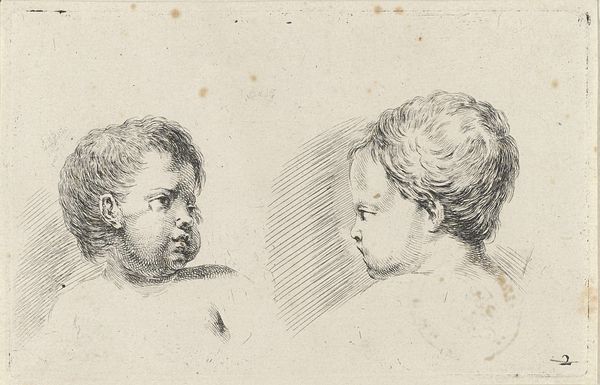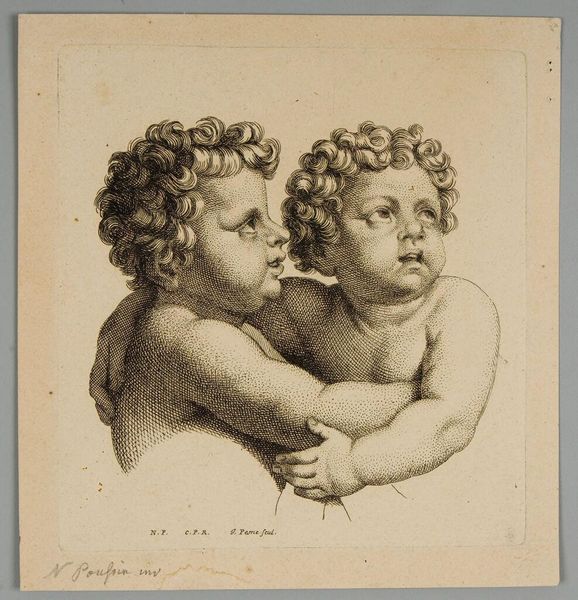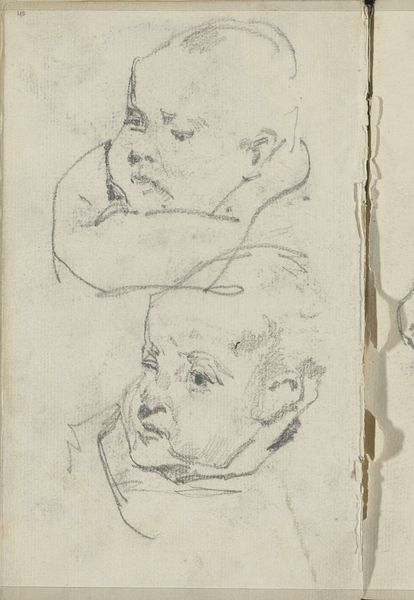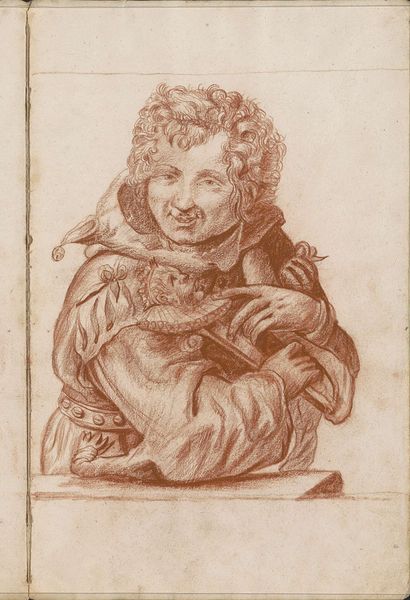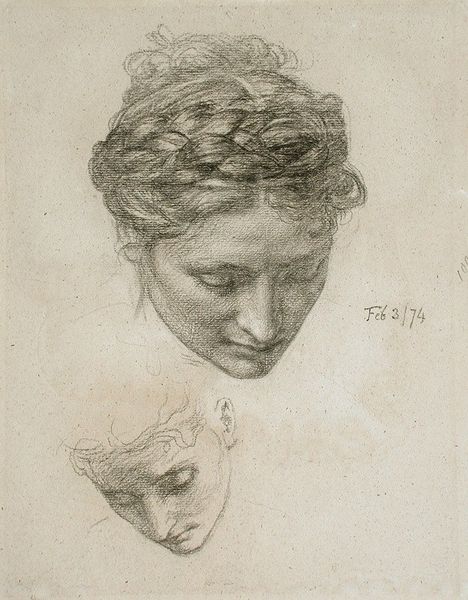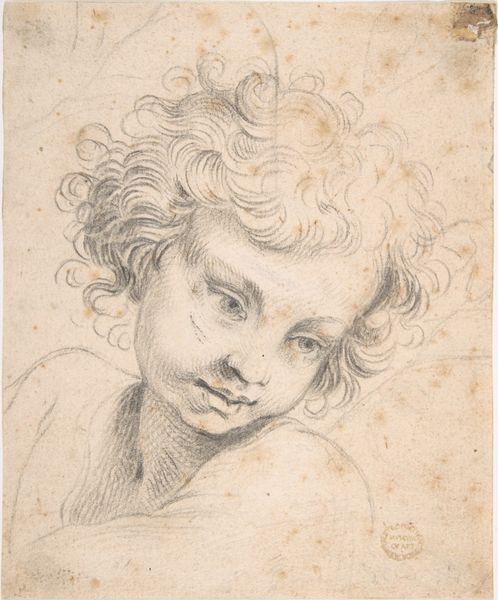
drawing, sculpture, pencil
#
portrait
#
drawing
#
baroque
#
pencil sketch
#
charcoal drawing
#
figuration
#
form
#
11_renaissance
#
pencil drawing
#
sculpture
#
pencil
#
portrait drawing
Copyright: Rijks Museum: Open Domain
Hendrick van Beaumont rendered these two busts in sanguine, each a study in youthful innocence and classical form. These aren't mere portraits; they evoke the ancient Roman tradition of idealized youth, reborn in the Renaissance. Consider the cherubic faces and the drapery, reminiscent of classical sculptures. This motif carries echoes of antiquity, a longing for an age of harmony and order. These forms transcend their original context. Think of Donatello's "David," a hero, yet possessing a similar youthful vulnerability. It reflects a culture’s yearning for beauty and purity, perpetually reimagined. The depiction of youth is potent, tapping into our collective memory of potential and hope. It’s a visual echo that resonates through centuries, each artist and viewer adding their layer of interpretation to this timeless symbol. It engages us on a deep, subconscious level, reminding us of the cyclical nature of life and art.
Comments
No comments
Be the first to comment and join the conversation on the ultimate creative platform.

